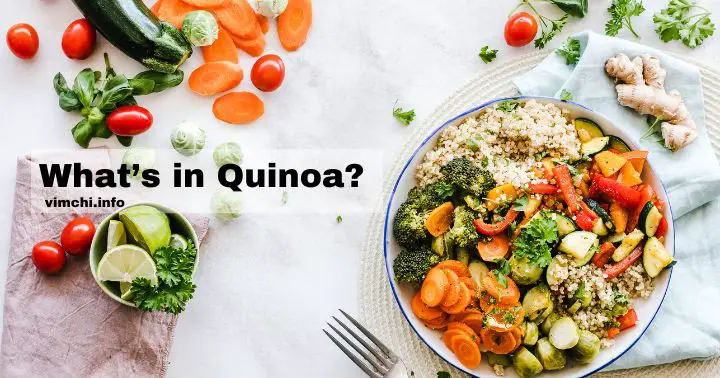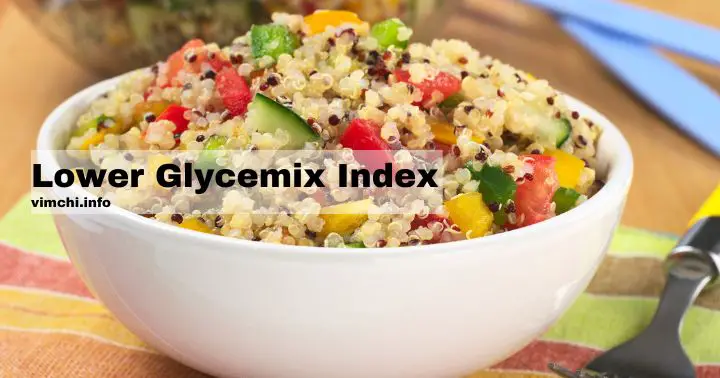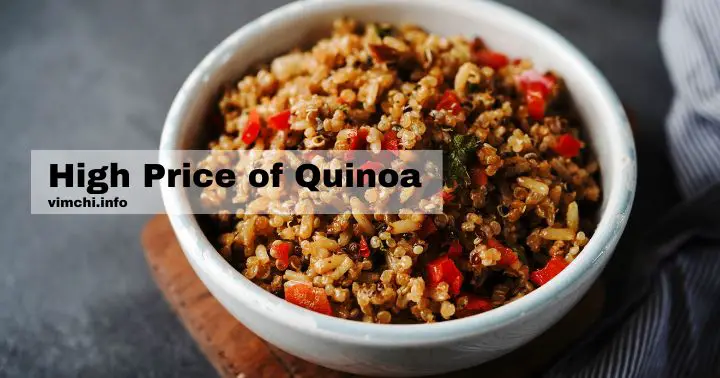
I’ve seen a lot of health shops selling quinoa. But it’s more expensive than rice. However, is it a healthier alternative? What’s in quinoa that makes health enthusiasts rave about it? Continue reading to know more.
What’s in Quinoa – Is It Healthier Than Brown Rice
It’s important to note that both options are nearly the same in terms of calories and fiber content.
They can complement your well-rounded diet. However, quinoa has more punch.
The reason for this is that it’s a complete protein, compared to brown rice which only contains some essential amino acids.
Furthermore, quinoa contains more nutrients overall.
Nutritional Comparison
Quinoa and rice contain carbs. However, they differ in their overall nutrient composition.
Protein Content
This is one of the biggest advantages of quinoa over rice. A cup of quinoa has eight grams of protein.
Rice, on the other hand, has only four grams. Brown rice is slightly better than white rice as it contains five grams of protein.
But it’s not just the protein content. Rather, it’s the type of protein that it contains. Compared to rice, quinoa has all nine essential amino acids.
This is one of the reasons vegans and vegetarians prefer it over rice.
Fiber Content
Although rice and quinoa are high in fiber, the latter provides about five grams of fiber for a cup of cooked quinoa. Brown rice only has 3.5 grams while white rice has less than one gram.
It’s important to note that the higher the fiber content, the better. Fiber is linked to better digestion. It also improves gut health while lowering the risks of heart disease.
Carbs and Glycemic Index
Rice and quinoa are rich in carbohydrates. However, their impact on blood sugar differs.
White rice has a high glycemic index of around 73. In that case, it can cause rapid spikes in your blood sugar.
Brown rice may have a lower GI at 50.
But quinoa is even lower around 53.
With that in mind, quinoa wins. It’s better for you especially if you’re managing diabetes. It’s also a great option if you wish to stabilize your blood sugar.
Micronutrients
Quinoa is richer in vitamins and minerals, like folate, iron, and magnesium, than white rice.
Even though brown riche has a more balanced mineral profile, it still falls short compared to quinoa. This is in terms of magnesium and iron content.
Can I Eat Quinoa Every Day?
Yes, you can definitely eat quinoa every day. Asians do eat rice every day. So why can’t you eat quinoa each day?
It’s a nutritious, gluten-free grain that provides essential vitamins, minerals, and protein.
Then again, moderation is still key.
If you eat it every day, here are the benefits you can get:
Rich in Nutrients
It’s packed with essential nutrients, like magnesium, iron, folate, and B vitamins. They can support energy production, brain function, and overall well-being.
Quinoa also retains nutrient content because it’s a whole grain, unlike refined grains.
Complete Protein Source
This is one of quinoa’s standout features. As mentioned earlier, it contains all nine essential amino acids. Thus, it’s a complete protein.
It’s an excellent daily choice for vegans, vegetarians, and anyone looking to boost his/her protein intake.
Supports Digestive Health
Quinoa is high in fiber. Per cooked cup of this food will give you five grams of fiber.
Thus, if you want to move regularly, quinoa might be a better option than white or brown rice.
It also supports gut health as it feeds beneficial bacteria in your intestines.
Manage Blood Sugar Levels

It has lower glycemic index than refined grains or white rice. Quinoa prevents blood sugar spikes. It makes it a great daily food choice if you have diabetes or if you want to stabilize your energy levels.
Heart-Healthy Choice
Quinoa contains heart-healthy nutrients, like magnesium, fiber, and antioxidants.
These nutrients help lower bad cholesterol, lower inflammation, and support overall cardiovascular health.
Weight Management Benefits
Since it’s high in protein and fiber, it can keep you fuller for longer. It can reduce your overall calorie intake to help with your weight management.
It also provides lasting energy without leading to rapid blood sugar crashes.
Why You Don’t Want to Eat Quinoa Daily?
Although quinoa is great for your health, these are the reasons you might not want to eat it every day.
Digestive Sensitivity: It contains saponins. They’re natural compounds that can cause mild digestive discomfort in some people. You can avoid it by rinsing it thoroughly before cooking to remove excess saponins.
Moderation is Key: It’s highly nutritious. Variety is vital in any diet. That’s why if you eat only quinoa each day, it can lead to an imbalance in nutrient intake. Thus, it’s best that you pair it with other whole grains, vegetables, and other protein sources.
Caloric Consideration: It’s a healthy carbohydrate. But it’s still a calorie-dense compared to some other grains. Thus, be mindful of your portion size, if you’re trying to lose weight.
Is Quinoa Better Than Oats?
Quinoa and oats are popular whole grains. They both offer valuable nutrients. They only differ in protein content, fiber levels, and overall health benefits.
The protein content of quinoa is way higher than oats. A cup of cooked quinoa contains eight grams of protein while a cup of cooked oats has six grams.
Furthermore, it contains all nine essential amino acids. That’s why it’s a complete protein source. Oats, on the other hand, lack essential amino acids, like lysine.
Nevertheless, oats still provide a good amount of plant-based protein.
Fiber Levels
Both are rich in fiber. But oats have a slight advantage here as it offers around four grams of fiber compared to quinoa’s 2.5 grams of fiber.
Furthermore, the beta-glucan fiber in oats is beneficial if you wish to lower your cholesterol levels while promoting gut health.
Carbohydrates
They provide complex carbs. However, they differ in how they affect blood sugar levels. Quinoa has a lower GI of around 53 while rolled oats have 55. Don’t go for instant oats as they have higher GI that can lead to quicker blood sugar spikes.
Vitamins and Minerals
They contain important vitamins and minerals. However, their profiles vary.
Quinoa contains higher magnesium, iron, phosphorus, and folate. Magnesium is vital for muscle function and heart health.
Oats, on the other hand, contain higher manganese and B vitamins that support metabolism and brain function.
Overall, if you want higher protein content and control your blood sugar, then quinoa is a better option. But if you want the cholesterol-lowering benefits, then oats are more superior.
Why is Quinoa So Expensive?

Quinoa is significantly more expensive than rice, wheat, and other grains. The high price of quinoa is the result of increasing global demand, export costs, cultivation challenges, and several others.
Limited Growing Regions
This crop thrives in high-altitude conditions. For that reason, it’s primarily grown in South America. It requires cold nights and warm days.
Unlike rice and wheat, quinoa’s production remains geographically restricted. This limited supply influences its high cost.
Cultivation Challenges
Another reason quinoa is costly is its cultivation process. Keep in mind that it still uses traditional farming methods, unlike corn and wheat.
It means that harvesting and processing it require significant manual labor. Furthermore, quinoa plants produce seeds that are carefully processed to eliminate bitter-tasting saponins. The extra steps can easily add to production costs.
Increasing Global Demand
For the last two decades, quinoa has transitioned from being a regional staple in South America to a globally popular superfood. Its popularity skyrocketed as more and more consumers embraced plant-based diets and protein-rich foods.
As the demand grows, the supply struggles to keep up. Hence, the increasing prices.
What is the Best Way to Eat Quinoa?
Quinoa is highly nutritious. You can incorporate it into your meals throughout the day. Here are some tips to fully enjoy it.
Cook It Properly
Proper preparation is the key to enjoying it. Just like rice, you must rinse it before cooking. As mentioned earlier, it has saponins. They’re natural coating that can give quinoa a bitter taste.
To rinse it properly, use cold water. Use a fine mesh strainer.
In terms of the water ratio, the best is a cup of quinoa to two cups of water or broth.
Cook it for about 15 minutes. After cooking, let it sit for five minutes before you fluff it with a fork.
You may also choose to cook it with milk or almond milk. Then, top it with honey, cinnamon, and fresh fruit.
Blend cooked quinoa into a smoothie for extra protein and fiber.
Or you may mix it with Greek yogurt, nuts, and berries for a nutritious morning. Meal.
Substitute for Rice
You can replace your favorite rice with quinoa. Use it instead of rice in a vegetable stir-fry.
Another way of serving it is to add it as a side dish. For instance, you may serve it with grilled meat, fish, or roasted vegetables.
It’s also easy to incorporate it into main dishes. Keep in mind that it works well in hearty meals, like quinoa stuffed peppers. Simply mix it with vegetables, beans, and spices. Then, stuff it into bell peppers.
You can also make quinoa burgers or add it to soups or stews.
Quinoa – A Healthier Alternative
“What’s in quinoa?” Well, it’s high in protein and it contains 9 essential amino acids. It’s a good alternative to white rice or brown rice. Incorporating it into your balanced diet can provide a variety of benefits.
Speak Now ... Or Forever Hold Your Peace